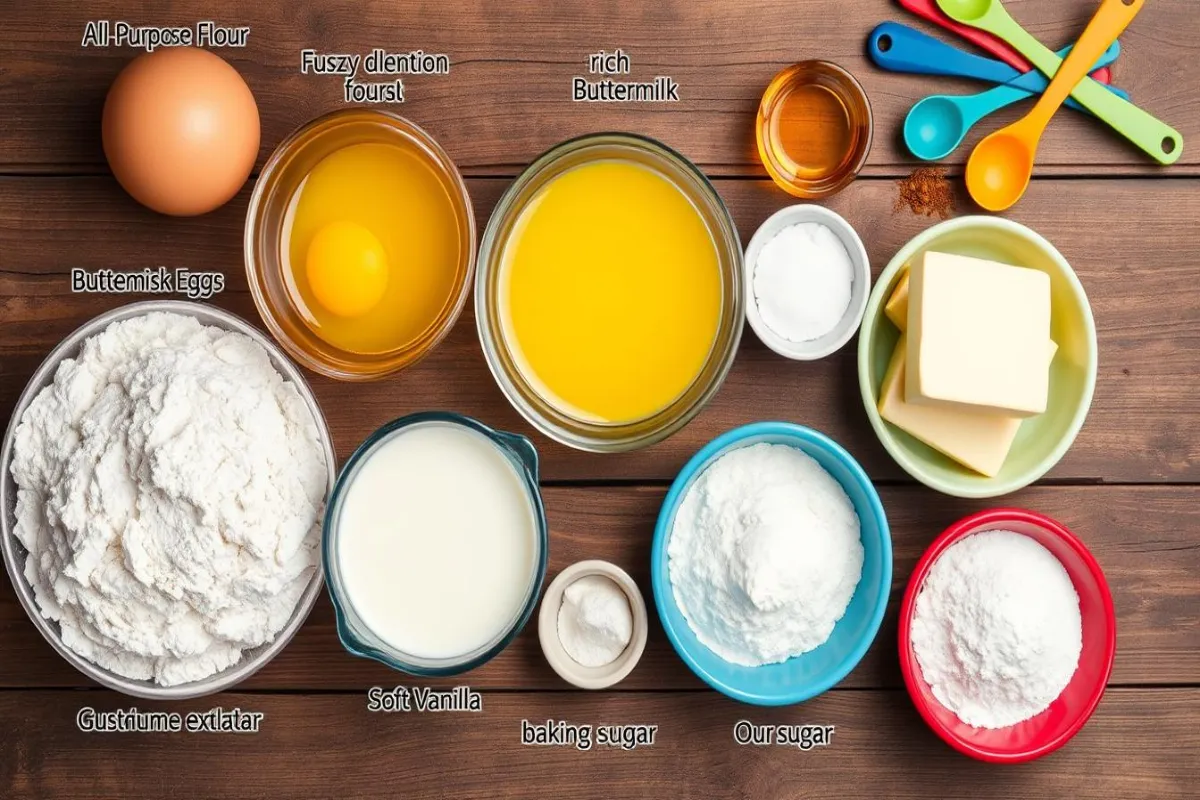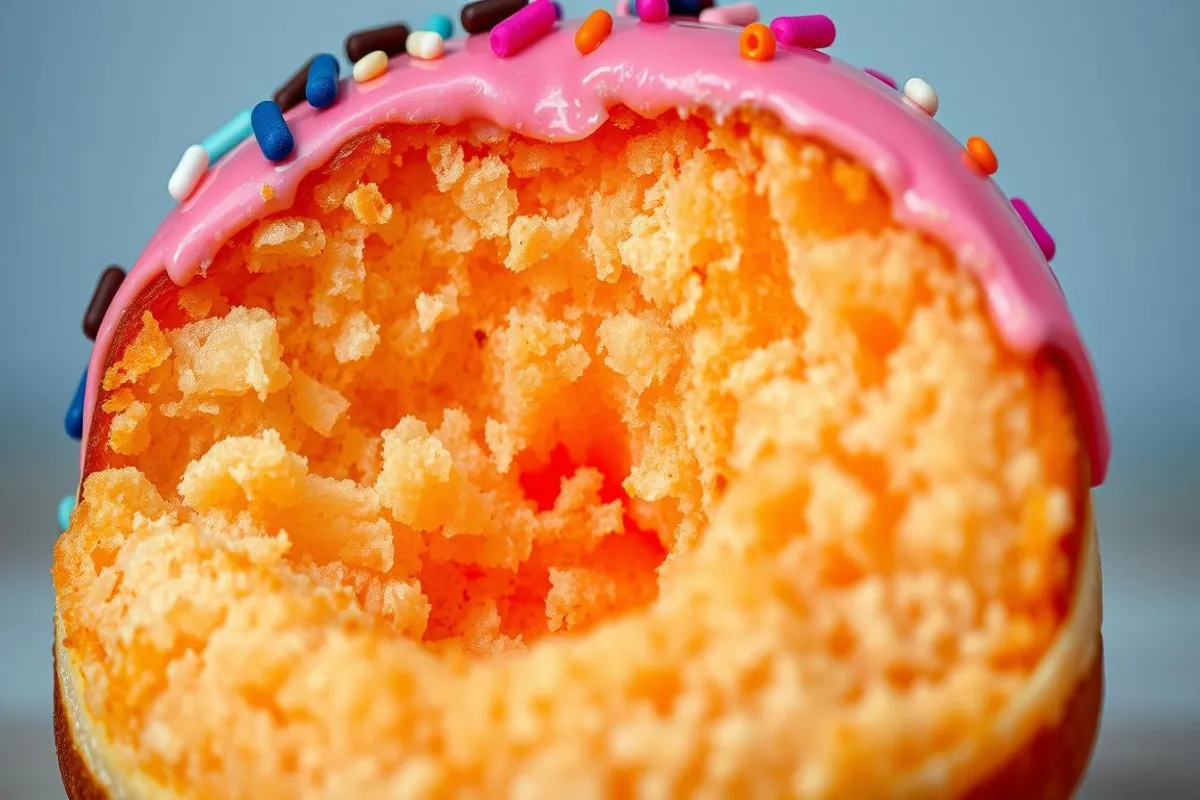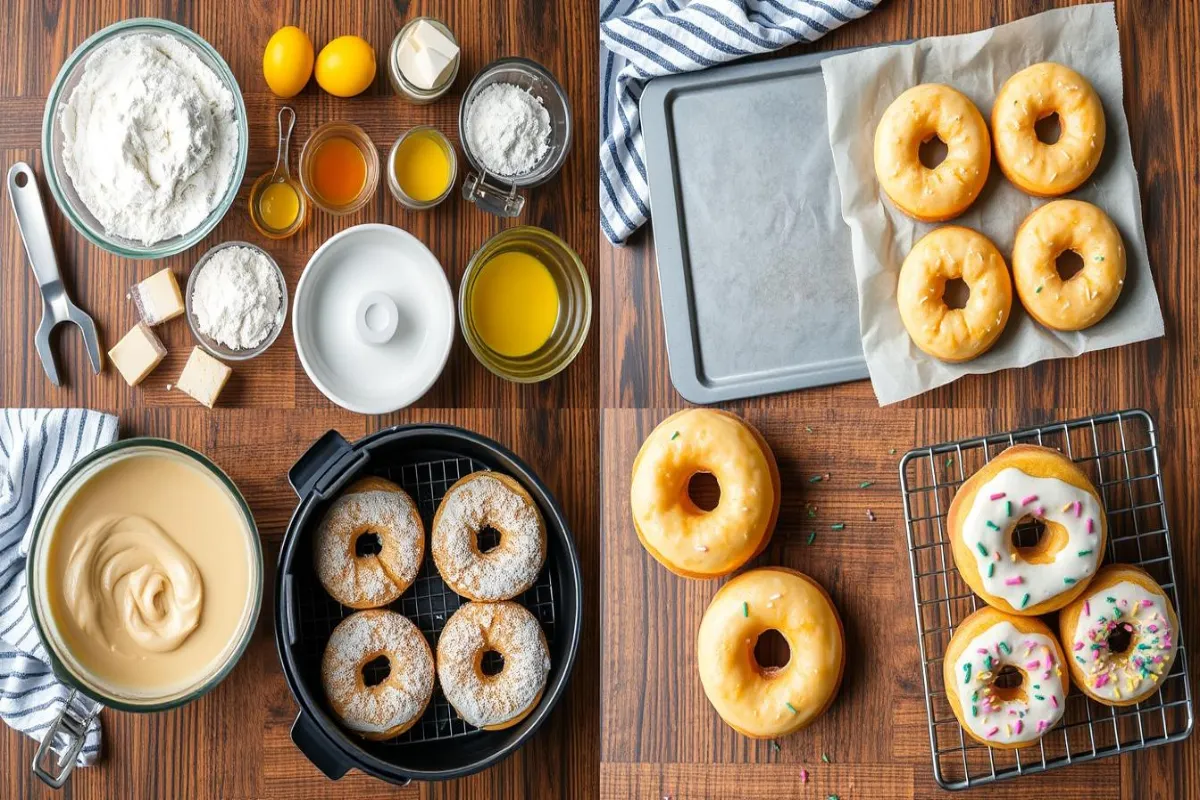Cake donuts are one of the most popular types of donuts found in bakeries worldwide, yet they have a distinct flavor and texture that sets them apart from their counterpart, yeast donuts. Whether you prefer cake donuts for their rich flavor or are simply curious about why they taste different, this article will delve into the factors that influence their unique taste. We will explore the role of ingredients, frying techniques, and much more to help you understand why these donuts are the way they are.
Understanding Cake Donuts and Yeast Donuts
To understand why cake donuts taste different, it’s essential to compare them to yeast donuts. The primary difference lies in the leavening agents used. Cake donuts rely on baking powder or baking soda for leavening, while yeast donuts use yeast as a leavening agent. This difference results in significant variations in taste and texture.
Cake donuts have a dense and firm texture due to the lack of fermentation, while yeast donuts are light and fluffy, thanks to the action of yeast. The type of leavening agent directly influences the flavor of each donut. Yeast imparts a subtle tangy taste that is absent in cake donuts. Instead, cake donuts have a richer, slightly sweet flavor that resembles a traditional cake. For more about the differences between cake and regular donuts, check out Dive Into the Donut Debate.
Another crucial factor is the frying technique. Cake donuts are fried at a lower temperature compared to yeast donuts. This lower temperature results in a denser texture and a somewhat crispy exterior. If you’d like to explore the science behind the differences, Food Crumbles offers an in-depth explanation. You can also read more on How to Make the Perfect Cake Donut.
Ingredients and Their Impact on Flavor

The ingredients used in making cake donuts significantly affect their taste. Here are the main components that play a role in determining why cake donuts taste different:
- Flour: Typically, all-purpose flour is used, which gives the donuts their structure. The type of flour and the amount of gluten development determine the texture of the final product.
- Sugar: Sugar adds sweetness and also contributes to the browning of the donuts during frying, enhancing the overall flavor.
- Eggs: Eggs help bind the ingredients together and add richness to the flavor. They also help in providing a slight rise to the batter.
- Butter: Butter or another fat is added to give a tender crumb and enrich the taste. Butter’s rich flavor contributes to the overall experience of a cake donut.
- Baking Powder: The leavening agent used in cake donuts is typically baking powder, which allows the donuts to rise during frying without the need for fermentation.
These ingredients come together to create a dough that resembles a thick cake batter. The baking powder gives cake donuts a texture that’s different from the airy, elastic texture of yeast donuts, which use a leavening process that involves fermentation.
The Science of Cake Donuts
The science behind why cake donuts taste different lies largely in the frying process and how the ingredients interact. Cake donuts are fried at a lower temperature than yeast donuts, typically between 325°F and 350°F. This lower temperature allows the donut to cook evenly and develop a denser, more crumbly interior while keeping the exterior crispy.
During frying, the moisture in the batter evaporates, and the donut absorbs oil, which contributes to its flavor. However, cake donuts are less greasy than yeast donuts because their batter forms a more solid crust, limiting oil absorption. The Maillard reaction, a chemical reaction that occurs during frying, gives the donuts their golden-brown color and enhances their rich flavor.
Another aspect of cake donuts is their shorter shelf life. Due to moisture loss, cake donuts tend to dry out faster than yeast donuts, which have a higher moisture content due to fermentation. This dryness, however, also makes them ideal for dunking in coffee or milk.
Frying Temperature and Its Impact on Taste
The frying temperature for cake donuts has a significant impact on their texture and taste. Cake donuts are typically fried at a temperature lower than that of yeast donuts. This lower frying temperature helps to:
- Create a crispy crust that contrasts with the dense interior.
- Prevent over-browning, which could lead to a bitter taste.
- Ensure even cooking, giving the donut its characteristic crumbly texture.
In contrast, yeast donuts are fried at a higher temperature, which results in a lighter, airier texture. The Maillard reaction, which occurs when proteins and sugars in the batter react to heat, creates the rich, deep flavors and the brown crust that we associate with cake donuts.

Toppings and Their Influence on Flavor
The toppings used on cake donuts also contribute to their unique flavor. Unlike yeast donuts, which are often coated with glaze or filled with cream or jelly, cake donuts are typically topped with:
- Powdered Sugar: Adds sweetness without overpowering the donut’s natural flavor.
- Cinnamon Sugar: Adds warmth and depth to the flavor profile.
- Chocolate or Vanilla Glaze: A thin coating that enhances the sweetness and gives the donut a slight crunch.
These toppings not only add flavor but also contribute to the overall texture of the donut, making each bite a delightful experience. The denser nature of cake donuts makes them ideal for holding up to heavier toppings like chocolate chips or nuts, which might collapse a lighter yeast donut.
Cake Donuts vs. Yeast Donuts: A Comparative Taste Experience
The difference in taste between cake donuts and yeast donuts can be attributed to several factors, including ingredients, preparation methods, and cooking techniques.
- Leavening Agents: Cake donuts use baking powder or baking soda, which gives them a dense and firm texture. Yeast donuts, on the other hand, rely on yeast for leavening, resulting in a light and fluffy texture.
- Texture: Cake donuts are denser and have a crumbly interior, whereas yeast donuts are airy and soft. The texture of cake donuts makes them perfect for dunking in beverages like coffee.
- Flavor: Cake donuts have a rich, buttery flavor that is slightly sweet, while yeast donuts are often sweeter due to added glazes or fillings.
- Cooking Technique: Cake donuts are fried at a lower temperature, which helps create a crispy exterior, while yeast donuts are fried at a higher temperature, making them softer and fluffier.
The Historical and Cultural Context of Cake Donuts
The origins of cake donuts can be traced back to early European settlers, possibly Dutch immigrants, who brought their traditional fried dough recipes to America. Over time, these recipes evolved, and the cake donut became a popular breakfast treat in the United States.
Cake donuts became especially popular in the early 20th century when baking powder was more widely available. This allowed bakers to create donuts without the need for yeast fermentation, which required more time and effort. The convenience of making cake donuts helped them gain popularity, and they have since become a staple in bakeries across the country.
The Science of Taste: Why Cake Donuts Taste the Way They Do
The Maillard reaction, oil absorption, and leavening agent all play a role in why cake donuts have their unique flavor. The Maillard reaction, which occurs during frying, gives the donuts their golden-brown crust and enhances their flavor by creating complex compounds that are responsible for the rich, deep taste of fried foods.
The oil absorption during frying also contributes to the flavor. While cake donuts are less greasy than yeast donuts, they still absorb some oil, which adds to their overall flavor. The leavening agent, baking powder, causes the dough to rise slightly, giving it a cake-like texture that is different from the light, airy texture of yeast donuts.
Texture and Mouthfeel
The texture of cake donuts is one of the most distinct characteristics that sets them apart from yeast donuts. Cake donuts are denser and more crumbly, which makes them satisfying to bite into. The crispy exterior contrasts with the soft, cake-like interior, providing a delightful mouthfeel.
This dense texture also makes cake donuts perfect for dunking in coffee or milk, as they hold their shape without becoming too soggy. Yeast donuts, on the other hand, are too airy and soft to be dunked without falling apart.
Health and Nutritional Comparison
When it comes to health and nutrition, there are differences between cake and yeast donuts. Cake donuts tend to be higher in fat and calories due to the use of butter and the higher oil absorption during frying. Yeast donuts, which rely on yeast fermentation, are typically lighter and have fewer calories.
However, the difference in calories and fat content can vary depending on the toppings and fillings used. For example, a cake donut with a simple powdered sugar topping will have fewer calories than a yeast donut filled with cream or covered in glaze.
Popular Varieties of Cake Donuts
There are many different varieties of cake donuts, each with its own unique flavor and texture. Some of the most popular types include:
- Cider Donuts: Made with apple cider, these donuts have a tangy flavor that is perfect for fall.
- Chocolate Cake Donuts: Made with cocoa powder, these donuts have a rich, chocolatey flavor.
- Old-Fashioned Donuts: These donuts have a crispy, cracked exterior and a soft, cake-like interior. They are often coated in a simple sugar glaze.
Each variety of cake donut offers a different taste experience, but they all share the same dense, crumbly texture that makes cake donuts so popular. For more on different donut flavors, explore Sophia Recipes’ Donut Flavors Guide.
Frequently Asked Questions (FAQs)
Why do cake donuts taste different from yeast donuts?
Cake donuts taste different because they use baking powder as a leavening agent, whereas yeast donuts use yeast. This difference in leavening agents results in a denser texture and a different flavor profile for cake donuts.
How are cake donuts made differently from yeast donuts?
Cake donuts are made with a thick batter that is leavened with baking powder, while yeast donuts are made with a dough that needs to rise before frying. Cake donuts are fried at a lower temperature, resulting in a crispy exterior and a dense interior.
Which is healthier: Cake donuts or yeast donuts?
Yeast donuts are generally lighter and have fewer calories than cake donuts, which tend to be higher in fat and calories due to the use of butter and higher oil absorption.
Why do cake donuts have a denser texture?
Cake donuts have a denser texture because they use baking powder instead of yeast as a leavening agent. This results in a crumbly, cake-like texture rather than the airy, soft texture of yeast donuts.
Can cake donuts be baked instead of fried?
Yes, cake donuts can be baked instead of fried, but they will have a different texture. Baked cake donuts are less crispy and have a more cake-like texture compared to their fried counterparts.
